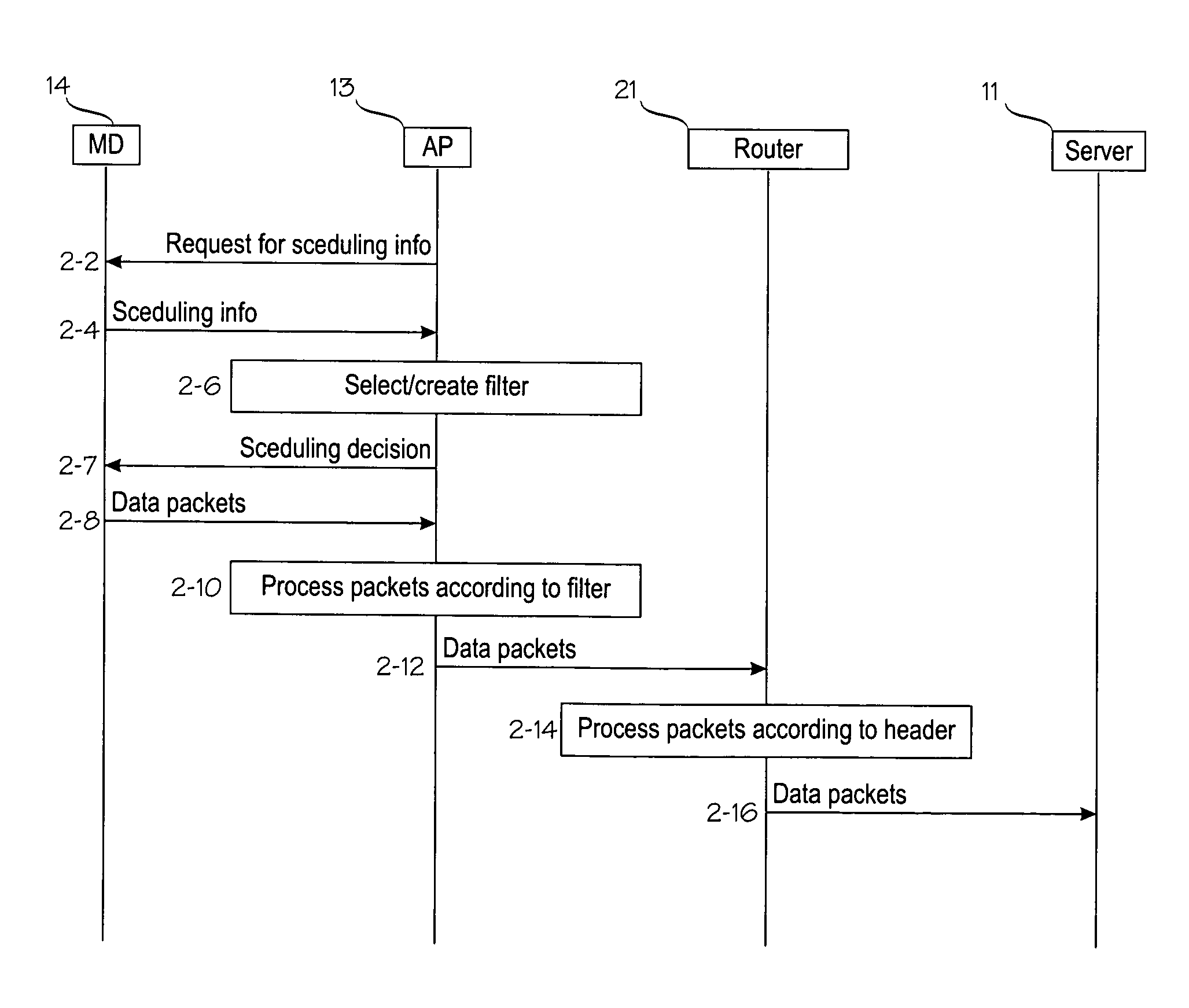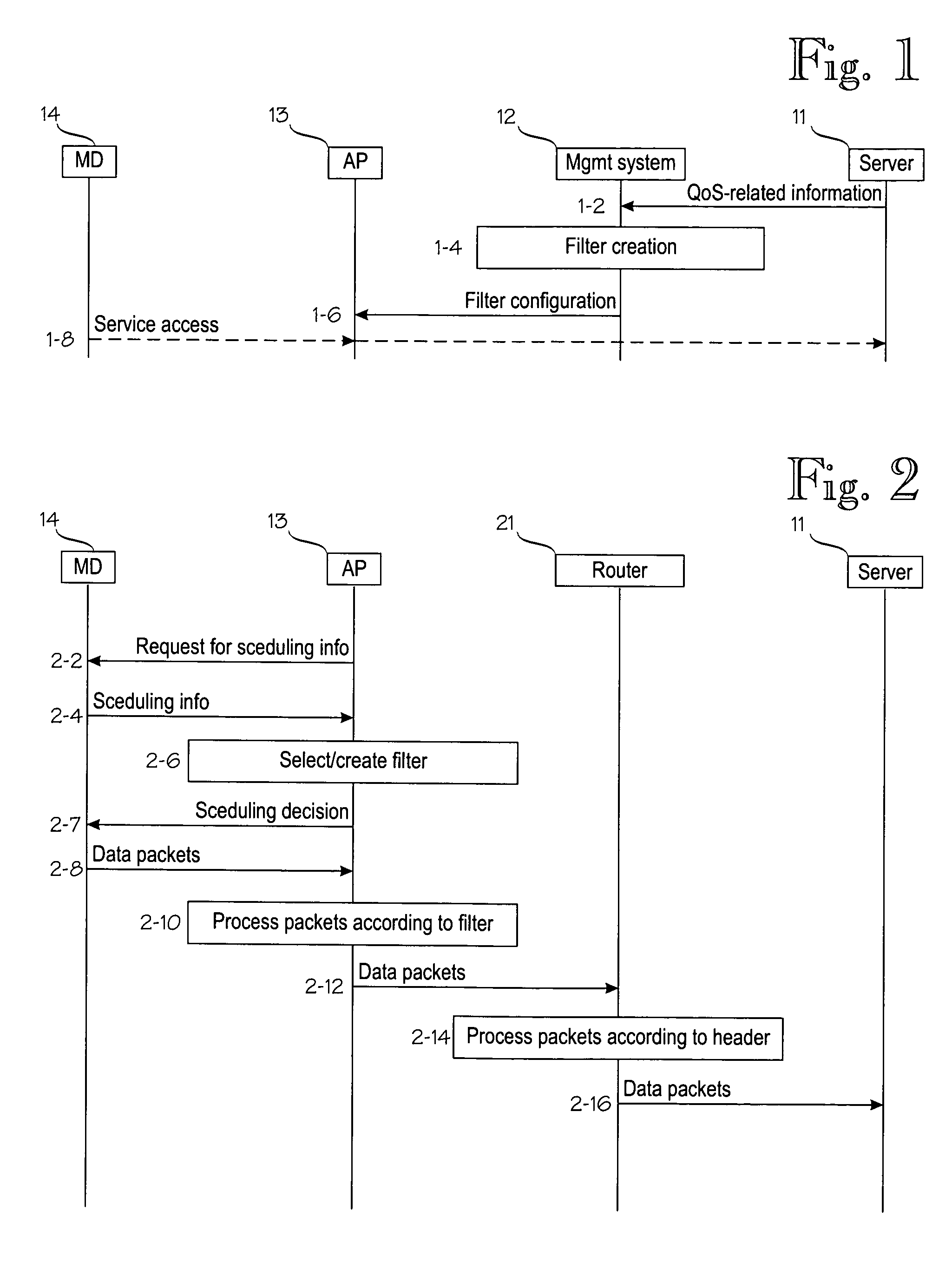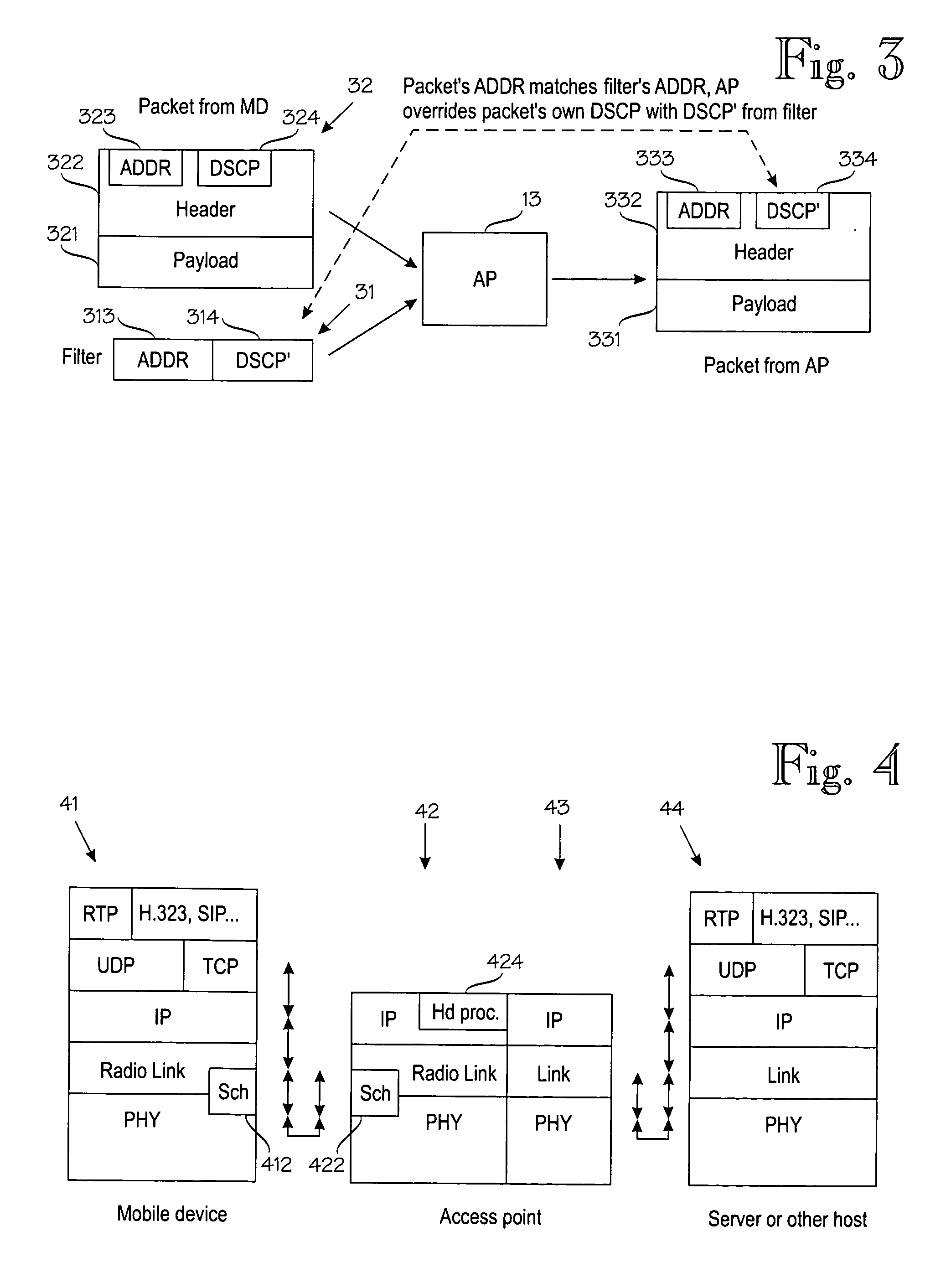Scheduling technique for mobile uplink transmission
a mobile uplink and transmission technology, applied in the field of scheduling techniques for uplink transmission, can solve the problems that pilot subscribers find such qos techniques difficult to understand, and achieve the effect of convenient managemen
- Summary
- Abstract
- Description
- Claims
- Application Information
AI Technical Summary
Benefits of technology
Problems solved by technology
Method used
Image
Examples
Embodiment Construction
[0021]FIG. 1 is a signaling diagram illustrating filter management according to an embodiment of the invention. In this embodiment, filter configuration in an access point 13 precedes an access of a mobile device 14 to a priority service at a server 11 via the access point. In step 1-2, the server 11 (or a service provider operating the server) sends priority-related information based on which a suitable filter will ultimately be configured for the access point 13. But the access point 13 may not have the capabilities to interpret the priority-related information and the server 11 or its service operator may not be able to translate the priority-related information into parameters suitable for the access point. Accordingly, the priority-related information from several servers is sent to a management system 12, such as a suitably configured server, that collectively translates it to parameters suitable for several access points. This operation is denoted by reference numeral 1-4. In...
PUM
 Login to View More
Login to View More Abstract
Description
Claims
Application Information
 Login to View More
Login to View More - R&D
- Intellectual Property
- Life Sciences
- Materials
- Tech Scout
- Unparalleled Data Quality
- Higher Quality Content
- 60% Fewer Hallucinations
Browse by: Latest US Patents, China's latest patents, Technical Efficacy Thesaurus, Application Domain, Technology Topic, Popular Technical Reports.
© 2025 PatSnap. All rights reserved.Legal|Privacy policy|Modern Slavery Act Transparency Statement|Sitemap|About US| Contact US: help@patsnap.com



